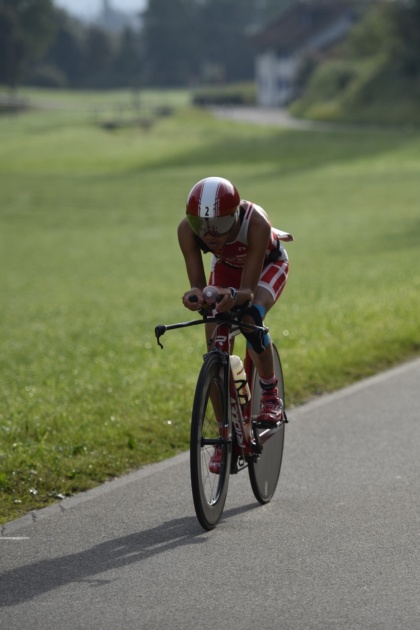
Duathlon Training: Two Types of Sports, Three Times the Burn
If a triathlon is too tough for you, you can just do a duathlon, a lot of people seem to think who have never been faced with a duathlon. But they're wrong, because a duathlon doesn't just consist of running and biking, but is a multi-sport type in its own right, in which the running and biking stretches can very rarely be completed one after the other. Instead, the typical combination consists of running, biking, and then running once again. And this, in turn, means withstanding several different physical activities in immediate succession. At the beginning of the first running stretch, duathletes have to start running like mad, and then hop onto their bikes with already overacidified muscles and bike off with rubbery legs until they finally get the hang of pedalling, and then for dessert, with fully empty and stiff legs, they must tackle the final running stretch.
Spontaneous action presents risk
Of course, just like with any endurance sport, you can simply complete a duathlon when you feel like it, if you have low expectations, are endowed with a certain basic endurance, and pace yourself properly during the competition. But the chances of heading home later feeling good about yourself after racing across the finish line increase tremendously when you specifically prepare for the demands of your first duathlon.
Beginners without athletic experience should therefore work out regularly for at least a year before attempting their first duathlon. Before the two disciplines can be practised in combination with each other, you should first train your physical endurance. In the sports of running and biking, the general rule of moderation applies: Besides regular basic training at high intensity, alternating more intense and faster-paced workouts proves beneficial (fartlek training, inclines, intervals) in increasing your base speed. At the same time, due to the strain on your locomotor system while running, a workout for core stability is recommended.
Hardcore alternating strain
Only once a duathlon competition is on the horizon is it time to combine the two sports with each other. Particularly the switchover from biking to the second stretch of running is a real tough nut to crack that should not be underestimated, entailing increased risk of injury, as you run as fast as you can yet again, but this time with already strained muscles. It thus makes sense not to simulate an entire duathlon competition with both switchovers right at the get-go, but to first just perform combined running and biking units. In doing so, it is perfectly fine to carry out the units the other way around (meaning first, biking and then running).
For the switchover process during dual workouts, you can take your time at first, and perform it gradually, leaving enough time to change your clothes and/or shoes. With practice, you will gradually reduce your needed switchover time until it reaches just a few seconds with a few quick actions. This is important as well: When you start the dual units, you should not carry out the individual parts too intensely, particularly just after the switchover, as your body needs time to learn to endure the switch of muscles.
Over time, you can learn to play around with the switchover process more and more. For instance, start running briefly at a swift pace for 10 minutes and then bike as quickly as possible for 30 minutes in order to get an idea of how your legs feel after the switchover. The subsequent challenge will increasingly be to manage the two different switchovers, in other words, adding on another running unit after the first running and biking stretches. Particularly since this second running unit never lives up to your expectations of what it could be, given your previous fatigue, and you would rather just jump into the shower once you get off the bike, duathlons are challenging not just from an athletic standpoint, but are tricky for your head as well. And it is for just this reason that stepping out of your (mental) comfort zone must be regularly practised.
Keep practising running and biking on their own
And despite the importance of alternating workouts, it is still advisable in preparing for a duathlon to continue performing specific units of running and biking, so that only the particular sport (meaning either running or biking) is focused on, without the switchover. Particularly technique exercises and more intense workouts with fartlek training and/or intervals provide the best results when performed individually.
Example duration dual workout with tough subsequent running stretch:
Warm up running a gentle pace for 15 minutes. 40-60 minutes of endurance running in the basic range; 1-3 hours of biking in the basic range; brief switchover, and 5-15 minutes of fast-paced subsequent running; 10 minutes of cool down running at a gentle pace
Example intense dual workout:
Warm up running a gentle pace for 15 minutes. Afterwards, 10-20 minutes of fast-paced running, switchover on the move, and 30-60 minutes of biking at competition speed (or as intense interval training); afterwards second run for 10-20 minutes at near competition speed; 10 minutes of cool-down biking at a gentle pace.
Foto:iStock.com
This may be of interest for you too


